Interpretation:
Among the given reactions, the reactions that proceed with carbocation rearrangement are to be identified.
Concept introduction:
The
The
The leaving bonded to tertiary carbon proceeds with
Want to see the full answer?
Check out a sample textbook solution
Chapter 9 Solutions
Organic Chemistry: Principles And Mechanisms
- Consider the following reaction scheme (note that the reagent shown above the arrow is DBN"). Draw in the expected major product AND indicate what mechanism the reaction will follow. Product: Mechanism:arrow_forwardWhat is the mechanism (in detail) of the following reaction?arrow_forwardIn which of the following reactions would you expect a carbocation rearrangement? Explain. Hint: You will need to figure out whether the predominant mechanism is Sn1, Sn2, E1, or E2. (a) (b) (c) OH H+ H+ H+ A OH ОН (d) Br (e) .CI NaBr ? CH;OH ? DMSO (f) dilute (CH3)3COK (g) OTs ? ? OTs (CH3);COH Ethanolarrow_forward
- For each reaction indicate the predominant mechanism: S,1, S,2, E1, or E2.arrow_forward2. Determine which mechanism, if any, will dominate in the reactions below. Choose between SN2, SN1, E1 and E2 or no reaction (NR). Provide the major product. NaOH H₂O Reaction Type NaSCH, DMF Reaction Type OTS NaOtBu HotBu, Heat H₁C CH₂ Nal DMSO Reaction Type Reaction Type H₁C NH₂ ether Reaction Typearrow_forwardProvide a reaction mechanism and an appropriate set of conditions to carry out the reaction shown. он SN2 reaction Br2 in CH2C2 SN1 reaction KBr, DMSO SN1 meachanism HBr in H20 SN2 reaction KBr in DMSOarrow_forward
- Answer the question below the reaction. ta The reaction above proceeds through which type of mechanism? SN2 SN1 E1 E2 OH + Excess NH4C1 H₂SO4 + H₂Oarrow_forwardIn this chapter, reversibility was discussed only in terms of SN2, SN1, E2, and E1 reactions, but the ideas apply to other reactions as well. Considering charge stability, determine whether each of the following elementary steps is reversible or irreversible. (a) (b) (c) H CH3 :? HÖ:arrow_forwardHow many acid-base steps occur in this mechanism? :OH fö OH ₂ H CI: -H₂O (C5H12O) (CsH3O*) :CI: :CI:- yox (C5H1*) (C5H₁1CI)arrow_forward
- Complete the reactions given below, write down the type of mechanism (SN1, SN2, E1, E2)?arrow_forwardConsider the intramolecular nucleophilic substitution reaction shown here. Does the stereochemistry of the product suggest an Sn1 or SŅ2 mechanism? Draw the complete mechanism for this reaction, including curved Br OH NaOH CH3 H3C CH3 Br H3C H arrows.arrow_forwardPlease give the product (or products) that you would expect to be formed in each ofthe following reactions. Also name the reaction mechanism of the reaction as SN1, SN2,E1, E2(note the reactions are in the images below )arrow_forward
 Organic Chemistry: A Guided InquiryChemistryISBN:9780618974122Author:Andrei StraumanisPublisher:Cengage Learning
Organic Chemistry: A Guided InquiryChemistryISBN:9780618974122Author:Andrei StraumanisPublisher:Cengage Learning
